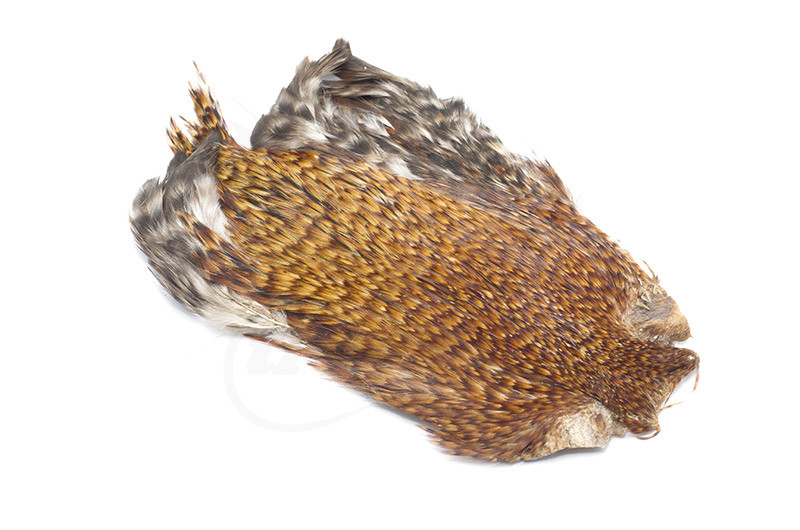Rooster capes, also known as rooster necks, are another essential material for fly tying, providing a variety of feathers that are ideal for creating lifelike imitations of aquatic insects. Roosters have a wider range of feather types than hens, with feathers that vary in stiffness, size, and color. This diversity makes rooster capes a versatile tool for fly tiers, allowing them to create a wider range of patterns.
Characteristics of Rooster Capes
Rooster capes are made from the necks regions of roosters, offering a diverse selection of feathers for a variety of applications. These capes are characterized by their stiffer feathers, which are ideal for creating the hackles of dry flies. Rooster hackles provide the necessary stiffness and upright posture to keep dry flies floating while also allowing them to move realistically in the water, attracting fish.
Variety of Feathers from Rooster Capes
Rooster capes offer a wide range of feathers, each with its unique properties and applications. Here are some of the common feathers used from rooster capes:
Small hackles: These are the finest and shortest hackles from rooster capes, typically used for tying dry flies like midges and mayflies. They provide a delicate and realistic appearance that mimics the tiny insects that trout and other fish prey upon.
Medium hackles: These are the most common hackles from rooster capes and are versatile for a wide range of dry flies. They offer a balance of stiffness and movement, providing the necessary support for dry flies while still maintaining some lifelike action.
Large hackles: These are the longest and stiffest hackles from rooster capes, typically used for tying larger dry flies like streamers and bass bugs. They provide the necessary stiffness to keep large flies floating while also creating a prominent silhouette that attracts fish.
Applications of Rooster Capes
Rooster capes are primarily used for tying dry flies, but they can also be used for certain wet flies and nymphs. Here are some of the common applications for rooster capes:
Dry flies: Rooster hackles are essential for tying a wide variety of dry flies, from small midges and mayflies to larger streamers and bass bugs. They provide the necessary stiffness and movement to keep flies floating while also creating a realistic appearance that attracts fish.
Wet flies: Rooster feathers, particularly the soft, downy feathers, can be used for tying the tails and bodies of some wet flies. However, the stiffer hackles from rooster capes are typically not as well-suited for wet flies due to their tendency to sink and lose their movement.
Nymphs: Rooster feathers are rarely used for tying nymphs, as they are not as durable underwater and tend to lose their stiffness and movement. However, some tiers may use soft rooster feathers for tying the bodies of nymphs, such as the soft hackle on a Pheasant Tail Nymph.
Conclusion
Rooster capes are an essential material for fly tying, providing a wide range of stiffer feathers ideal for creating realistic dry flies. Their versatility and durability make them a popular choice among fly tiers, from beginners to experienced anglers. Whether you're tying tiny midges or large streamers, rooster capes can help you create lifelike and effective flies that will attract fish and enhance your fly fishing experience.



